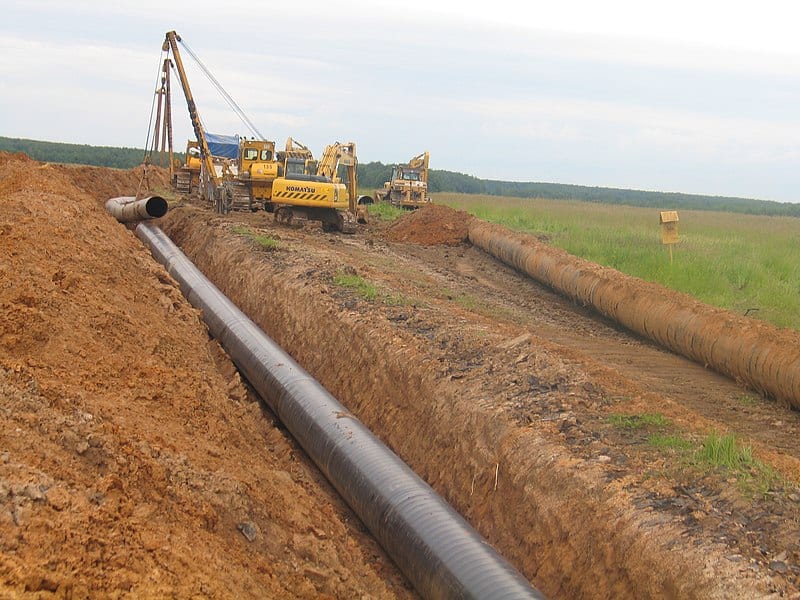The cart is empty!
And What Makes Cathodic Protection So Awesome?
Cathodic protection is a key technology for protecting against corrosion because it can be easy to apply and can be monitored 24/7. It’s as near to a set-it-and-see-it method for keeping buried, immersed or steel in concrete metal structures safe from corrosion as we can get. Plus, it’s cost-effective and works on many metals, as well as steel. It even works for atmospherically exposed steel when embedded in concrete.
Without going into too much depth – we just don’t have time in this article – let’s look at a few basics of cathodic protection.
What causes corrosion in the first place?
Corrosion is caused by a metal being in contact with a corrosive environment. Factors like the metallurgical condition of the metal, connection to dissimilar metals or varying levels of oxygen exposure can speed up the corrosion process.
You see, metal wants to go back to its natural state (ore) through a process known as corrosion. This is the metal “rusting” away. It’s an electro-chemical process that involves the flow of electrical currents, with an anodic reaction involving the oxidation of the metal to its ions.
So, how does cathodic protection actually work?
The idea behind cathodic protection is to turn the entire surface of the metal into a “cathode”, thus stopping the corrosion process.
An external “anode” is connected to the vulnerable metal with the result that the metal structure should not corrode. There are two main types of cathodic protection:
- Galvanic Anodes: These are sacrificial castings or extrusions of metal (usually aluminium, zinc, or magnesium) connected to the structure. They “take one for the team” and corrode first, sparing the main structure.
- Impressed Current: Here, a power source feeds a continuous low-level DC electrical current to the structure, keeping corrosion at bay. The most used metals to form the impressed current anodes are mixed metal oxide coated titanium and high silicon cast iron.
Practical uses of cathodic protection
This isn’t just theoretical stuff; it’s widely used in various industries. You’ll find cathodic protection in underground pipelines, bridges, tunnels, ships’ hulls, harbour structures, and particularly offshore structures like pipelines, oil/gas platforms, subsea structures and FPSOs. It is essential in the design of cost effective offshore renewable energy. It’s an essential tool to extend the lifespan of these costly structures and can even make them more economical to build.
Whilst the most common use of cathodic protection is for the external surfaces of metal structures it is also used to protect the internal surfaces of:
- Ship’s tanks (product and ballast)
- Storage tanks (oil and water)
- Water-circulating systems (e.g. power stations)
- Tidal barrages
What about wind turbine foundations offshore?
Good question! Offshore wind turbine structures face unique challenges like high water flow rates and seabed movement. While typical offshore cathodic protection systems may fall short of requirement for these conditions, we can modify them to help protect such structures.
First, we must consider how offshore structures face corrosion challenges in various zones:
- Atmospheric Zone: This part’s above water, exposed to wind, sun, and rain, and does not come into direct contact with seawater. Cathodic protection is not applied here, as it is not in contact with the sea water (the electrolyte). Instead, corrosion control is provided by use of suitable coatings.
- Splash Zone: This is where waves and salt spray hit. It’s a tricky area needing both high performance coating and cathodic protection, as it is constantly exposed to a corrosive environment.
- Submerged Zone: Always underwater, this part needs full-time cathodic protection, which may be in combination with a high-performance coating.
- Subsoil Zone: Buried in ocean mud, this zone is vulnerable to microbiologically influenced corrosion. Cathodic protection is necessary here too, at least near the seabed level.
Design considerations: Doing it right
Designing a cathodic protection (CP) system isn’t a one-size-fits-all affair. Various parts of a structure may require different treatment based on environmental factors, and the best time to get this right is at the design stage – long before anything is built.
The aim is to distribute the protective current uniformly over the structure and to make provisions for any predictable environmental changes. Importantly, the design should include a host of calculations, from the surface area that needs protection to the specific requirements for the variations in CP current demand in distinct locations. To provide effective cathodic protection, without disrupting the integrity of the structure, we must consider factors that include not only the environment, but also:
- Metocean conditions, notably tide and wave levels, water velocity at different depths, temperature, and salinity
- Surface area of the structure
- Coating efficiency
- The above will combine to determine the localised CP current demands of the structure, which will vary with time
- Electrical resistance of anodes (galvanic or impressed current)
- External power supply and cabling requirements for impressed current systems
- Number and distribution of anodes
- Monitoring instruments
Want to know more about cathodic protection in the modern world?
Cathodic protection has been around for a long time – since the 1820s, when Sir Humphrey Davy made its first practical use. But it has advanced a lot since, and is continually being innovated for use in the modern world.
For example, if you’d like to learn more about how CP is being used to help protect assets in Floating Offshore Wind installations, you could pay FOW23 a visit and spend some time with the ICorr team exhibiting there.
Or, if you are a young engineer seeking to accelerate your career, why not become involved in the Young Engineer Programme? During this programme, you’ll benefit from a series of lectures from renowned industry experts – including Brian Wyatt who will be presenting on cathodic protection, including its relevance in offshore wind.


